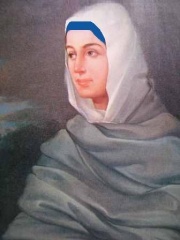Template:AOW169: Difference between revisions
Hari singh (talk | contribs) mNo edit summary |
Hari singh (talk | contribs) No edit summary |
||
| Line 7: | Line 7: | ||
The fateful events leading to the martyrdom of [[Guru Tegh Bahadur]] intervened, and in the changed circumstances it was not possible for the young Guru to go to [[Lahore]]. Therefore a temporary encampment was raised near the village of Basantgarh, 10 km north of [[Anandpur]], and named [[Guru ka Lahore]] where the nuptials were held on 23 Har 1734 Bk/21 June 1684. Mata Jito ji became Mata Sundari ji after marriage as was the custom in [[Punjabi]] families. | The fateful events leading to the martyrdom of [[Guru Tegh Bahadur]] intervened, and in the changed circumstances it was not possible for the young Guru to go to [[Lahore]]. Therefore a temporary encampment was raised near the village of Basantgarh, 10 km north of [[Anandpur]], and named [[Guru ka Lahore]] where the nuptials were held on 23 Har 1734 Bk/21 June 1684. Mata Jito ji became Mata Sundari ji after marriage as was the custom in [[Punjabi]] families. | ||
Four sons were born to Mata Jito/Sundar - [[Baba Ajit Singh]] (b:26 January 1687), [[Baba Jujhar Singh]] (14 March 1691), [[Baba Zorawar Singh]] (17 November 1696) and [[Baba Fateh Singh]] (25 February 1699). Mata ji received [[Amrit]] at the 1699 [[Vaisakhi]] Amrit Sanchaar ceremony and adopted the name 'Sunder Kaur'. Mata Sundari raised her four sons on the martyrdom tales of their grandfather [[Guru Tegh Bahadur]] and great great grandfather [[Guru Arjan Dev]]. | Four sons were born to Mata Jito/Sundar - [[Baba Ajit Singh]] (b:26 January 1687), [[Baba Jujhar Singh]] (14 March 1691), [[Baba Zorawar Singh]] (17 November 1696) and [[Baba Fateh Singh]] (25 February 1699). Mata ji received [[Amrit]] at the 1699 [[Vaisakhi]] Amrit Sanchaar ceremony and adopted the name 'Sunder Kaur'. Mata Sundari raised her four sons on the martyrdom tales of their grandfather [[Guru Tegh Bahadur]] and great great grandfather [[Guru Arjan Dev]]. {{Aowf|Mata Sunder Kaur}} | ||
Revision as of 12:53, 12 July 2008
Mata Sunder Kaur (Mata Sundri) or Mata Jeeto (Mata Jito) was the wife of Guru Gobind Singh (1666-1708). She was the daughter of Bhai Ram Saran, a Kumarav Khatri of Bajwara, in present-day Hoshiarpur district of the Punjab. She was married to the tenth Sikh Guru at Anandpur on 4 April 1684. The father-in-law had desired that the bridegroom should come at the head of a marriage party to Lahore where the ceremony should be performed with due dignity.
The fateful events leading to the martyrdom of Guru Tegh Bahadur intervened, and in the changed circumstances it was not possible for the young Guru to go to Lahore. Therefore a temporary encampment was raised near the village of Basantgarh, 10 km north of Anandpur, and named Guru ka Lahore where the nuptials were held on 23 Har 1734 Bk/21 June 1684. Mata Jito ji became Mata Sundari ji after marriage as was the custom in Punjabi families.
Four sons were born to Mata Jito/Sundar - Baba Ajit Singh (b:26 January 1687), Baba Jujhar Singh (14 March 1691), Baba Zorawar Singh (17 November 1696) and Baba Fateh Singh (25 February 1699). Mata ji received Amrit at the 1699 Vaisakhi Amrit Sanchaar ceremony and adopted the name 'Sunder Kaur'. Mata Sundari raised her four sons on the martyrdom tales of their grandfather Guru Tegh Bahadur and great great grandfather Guru Arjan Dev. .....More

